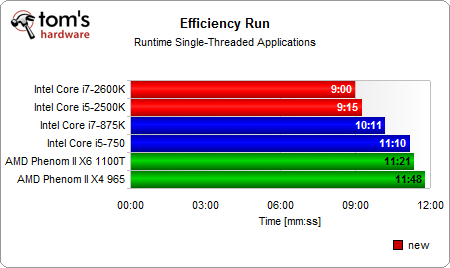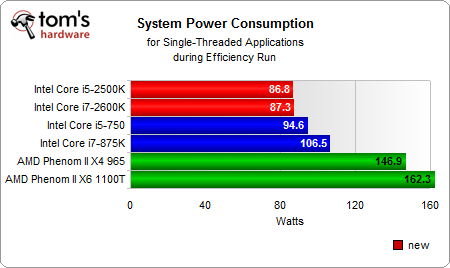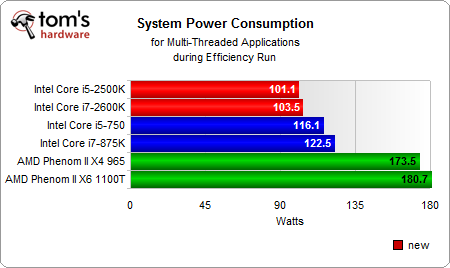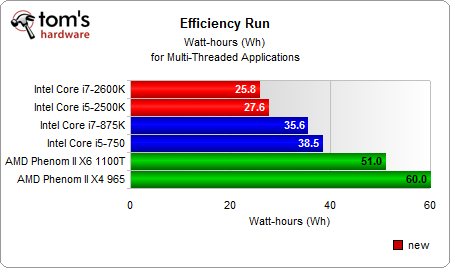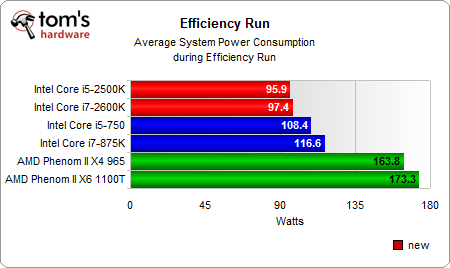Efficiency Comparison: Sandy Bridge Vs. Intel And AMD CPUs
The second-generation Core processors arrived with a bang, but what sort of progress can you expect in the performance per watt department? We compare Core i5/i7-2x00 to AMD's Phenom with four and six cores, as well as previous-gen parts from Intel.
Discrete Graphics Efficiency Results
Single-Threaded Workloads
As expected, the runtime for all single-threaded apps is shortest on Sandy Bridge again, mostly thanks to its higher clock speeds and performance per clock.
Average power is still lower on Sandy Bridge than on the other solutions.
Finally, total power used is also lowest on the second-generation Core processors. The AMD platforms require significantly more, as they not only require more power for the workload, but the added graphics card also consumes power without contributing to this particular task.
Multi-Threaded Workloads
The runtime on the multi-threaded applications is actually very similar on the fast Intel quad-core chips and the AMD hexa-core model. The two new Sandy Bridge-based systems are fastest.
The total power used is still much higher on the AMD systems, but the multi-threaded applications favor the four- and six-core processors.
Get Tom's Hardware's best news and in-depth reviews, straight to your inbox.
Full Efficiency Workload
Overall average power across our entire workload is lowest on the new Sandy Bridge-based systems.
The overall efficiency score with discrete graphics shows similar relationships between the different platforms, although the absolute gaps are smaller. The reason is the Radeon HD 5850 card we used, which requires power all the time and balances existing differences.
Current page: Discrete Graphics Efficiency Results
Prev Page Integrated Graphics Efficiency Results Next Page Conclusion